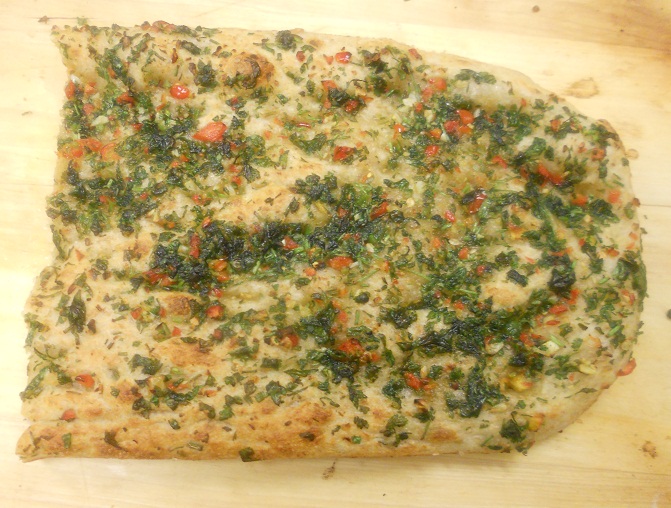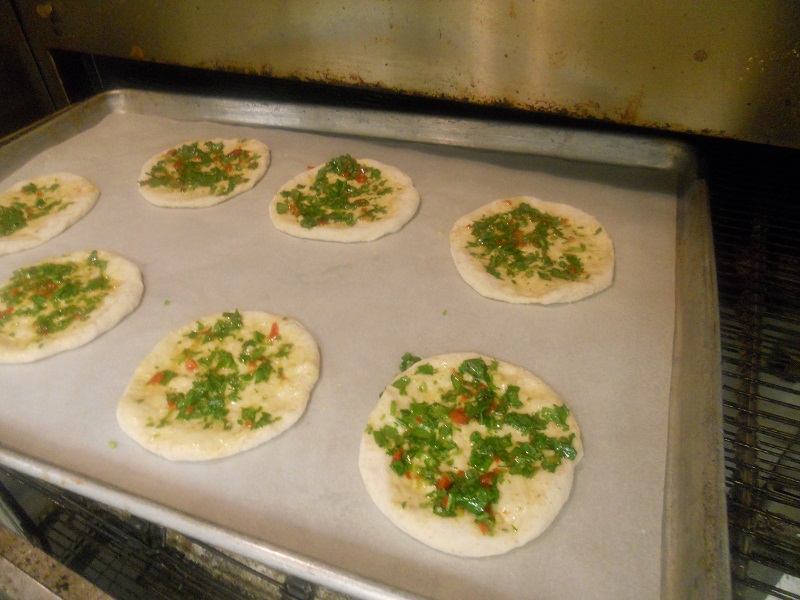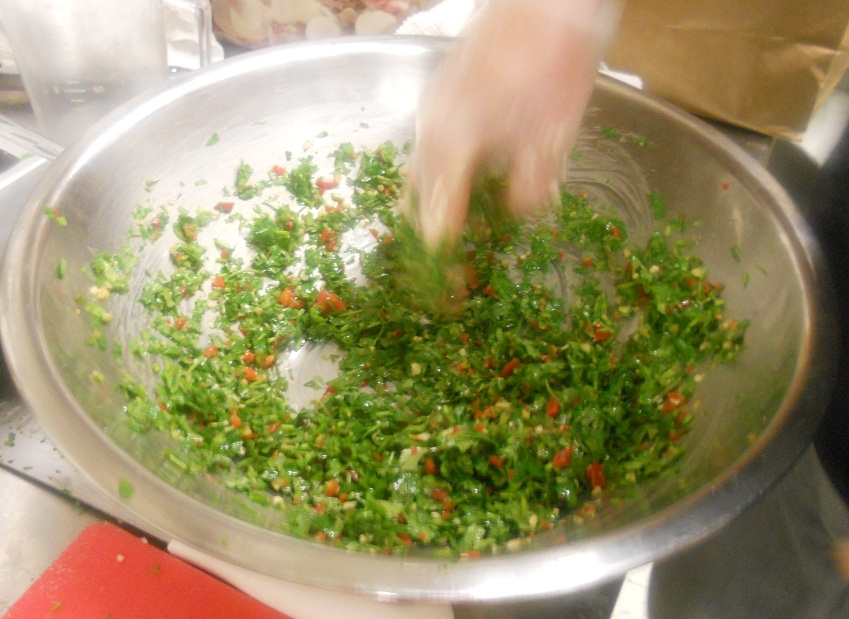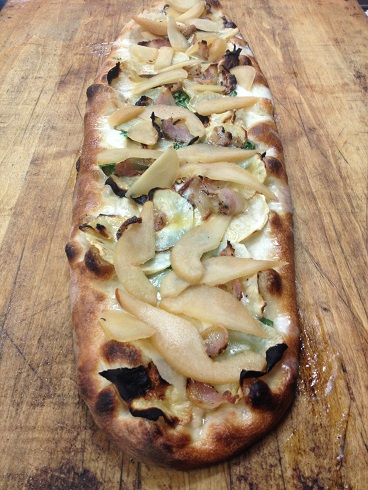
When you work with food day after day, there comes a time when its just all about taste. The freedom to throw traditions dating back thousands of years into the culinary shitcan is not only liberating, but its exhilarating! In pizza, there are many people who’s (boring) mantra is to keep the traditions alive no matter what. I like to change things up, wipe the tradition away with some soft Charmin and just…flush it. Case in point; Long Tall Sally.
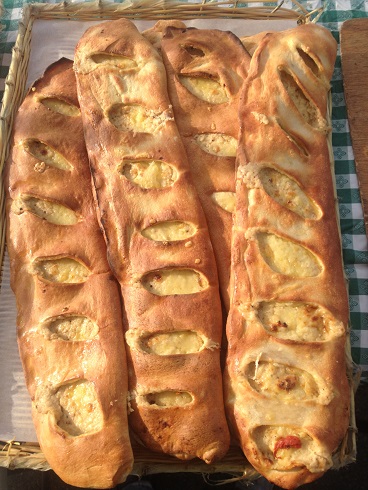
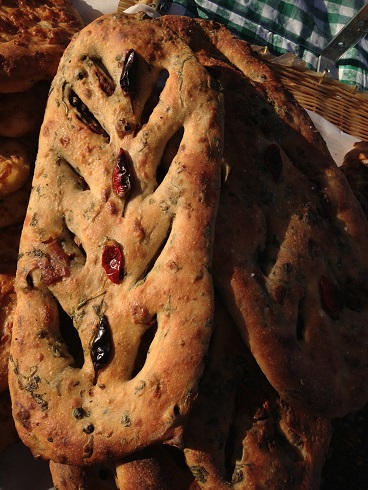
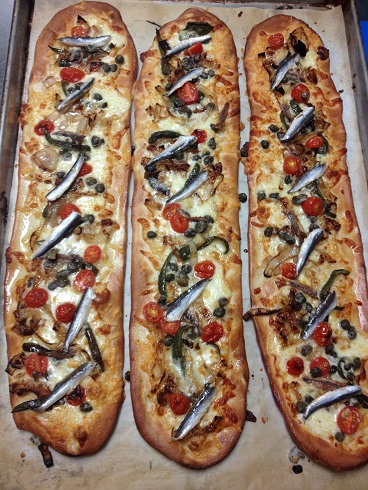
This spring I’ve been “Going Long” with my breads and pizzas. An abnormal obsession best reflected by my Garlic Pudding Stuffed Fougasse, (left) a nice wild arugula, blueberry, bacon and Calabrian Chili Fougasse and some crispy “Coca de Boquerones” with Manchego and Idiazebel, carlmelized onion, caper, cheddar curd, Peruvian anchovy and Spanish boquerones with tomato.
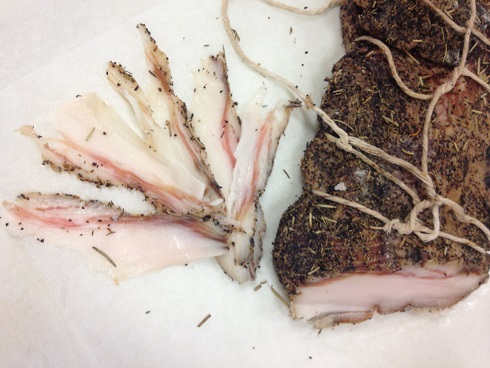
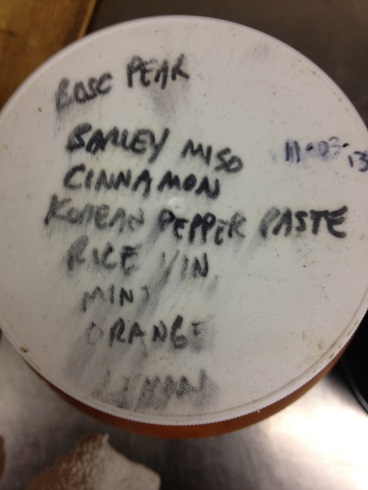
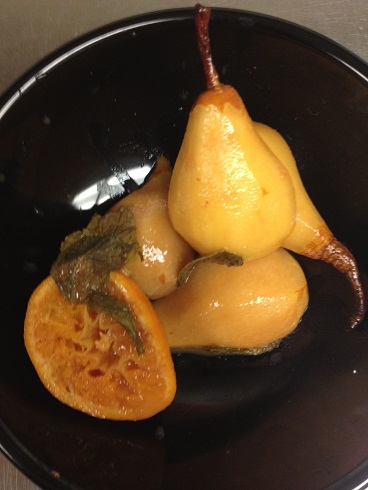
Now I want to pair some Red Wattle, (heritage breed pork) guanciale, (pork jowl or cheek- above left) that I cured with a long crisp Spanish syle Coca crust, Teleggio, an Italian Alpine cheese, some great roasted celery root, fresh basil and killer Bosc pears grown by Neal Cherry in Crooksville, Ohio that I have citrus-pickled last fall, (above middle and right). Enough talk, lets rock this pie.
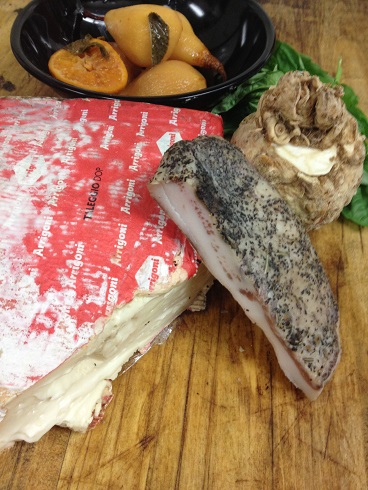
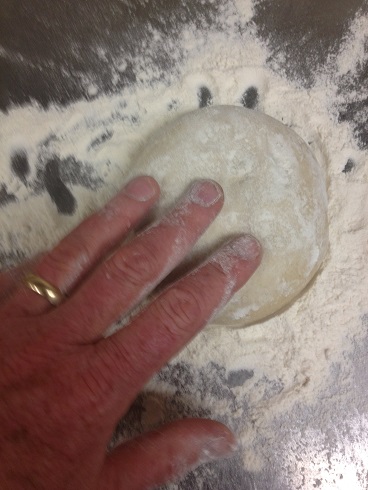
Recipe:
(The day before) Using the Easy Dough Recipe on this blog, mix the dough with half the yeast called for. After mixing, weigh out a dough ball of 15 ounces. Let is sit at room temperature for 30 minutes, then oil a bowl and place in your refrigerator for 15 to 24 hours to cold-ferment. When ready to make the coca, pull the dough ball out and let it sit in a warm place, (74-80 degrees) to proof.
Preheat your oven to 475 or higher, (if you can get it to 550 without burning your house down, go for it!)
Whatchagonnaneed:
One medium sized celery root
One tablespoon extra virgin olive oil
Twelve leaves of basil
Five to seven ounces of Teleggio cheese
Four ounces thin sliced guanciale (or bacon)
One pickled Bosc pear
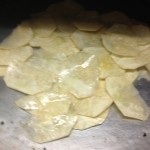
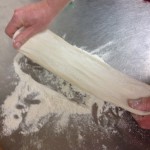
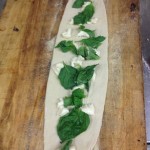
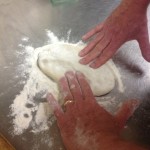
Peel and slice the celery root into very thin coins with a mandolin. Toss with the olive oil and roast in a 475 degree oven for eight minutes just until wilted. you may toss the root coins once to make sure of consistent doneness. Take the dough ball and form into a football shape using the tips of your fingers. Continue to press vertically. (you must have patience here, Holmes!). Stretch the gluten strands well without tearing then let the dough rest. This process can take up to 20 minutes. Place the dough on some parchment or a floured pizza peel then place the cheese and basil on the coca.
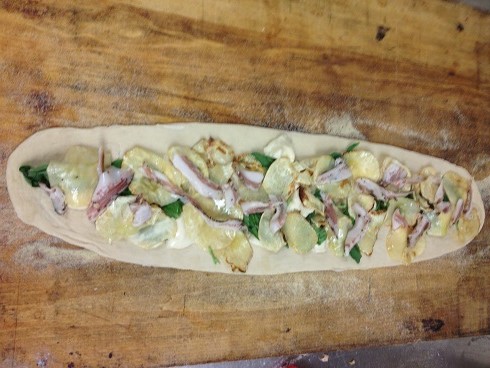
Top with the wilted celery root, the thin sliced guanciale and the pickled pear and place into the hot oven for seven to twelve minutes depending upon the temperature. (475= 12 minutes) (550= 7 minutes).
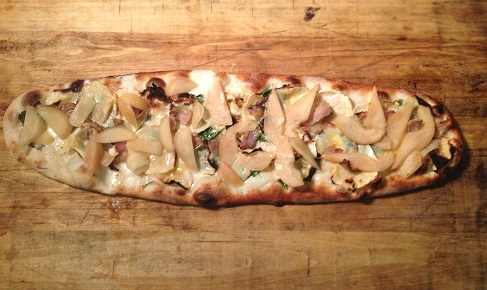
Slice and enjoy a spectacular tasting pizza with melting Teleggio, porcine fattiness and the perfect marriage of celery root, basil and pickled pear!

